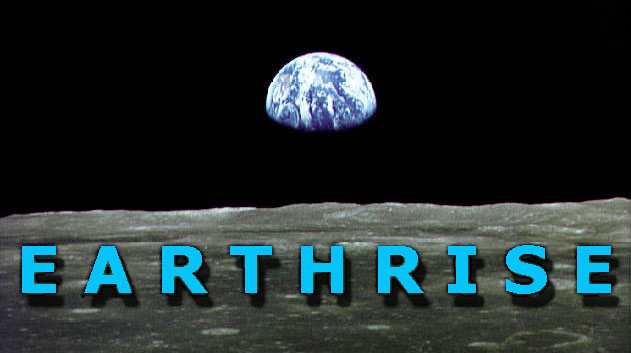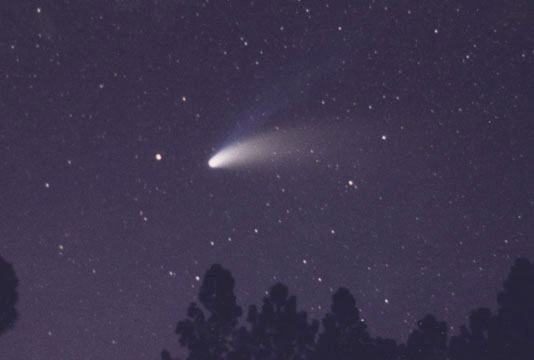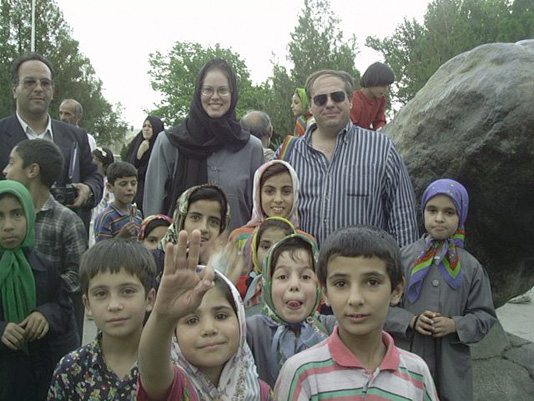|
|
 |
A HISTORY OF EARTHRISE
|
|
|
|
by Alan Hale (April 2004)
|
|
|
|
Astronomy, by its very nature, is an international activity. It is, essentially, the same sky that all of us on planet Earth see each night, and the observations that we make of an event from one part of the planet will reflect the same science that someone on another part of the planet will also make. Also, there are several events (for example, total solar eclipses) that, when they occur, may only be visible from a relatively small portion of Earth's surface, and those of us who wish to view them will often end up traveling to those particular regions of the planet. In doing so, we are then able to interact with our fellow inhabitants of planet Earth as we view and appreciate the spectacle that nature presents to us.
When I formed the Southwest Institute for Space Research in 1993 my goal was to create an organization that would be capable of performing important astronomical and space-theme research, and also to create a "learning-by-doing" educational environment that would give students an opportunity to participate directly in this research. During the Institute's early years we focused primarily on regional educational activities, and in more recent years we've been able to develop a program that performs important follow-up observations of comets and near-Earth asteroids. (Many of the astronomical images we've taken in the course of this program are featured on our images page.) We've also been active in promoting space activities, both within the regional area and on a wider national and international basis.
|
|
|
| A watershed event in the Institute's history took place on July 23, 1995, when I independently co-discovered Comet Hale-Bopp from the driveway of my house. A year and a half later that object became one of the brightest comets of the 20th Century, and has provided us with many important scientific results. It also became the most widely-viewed comet in history, and indeed was observed by sky-watchers all over the planet. As a result of my discovery I was able to travel to a variety of locations around the nation and around the world, and I have received correspondence from people from almost every region of this world of ours. |
|
 |
|
|
|
 |
|
The worldwide recognition that Comet Hale-Bopp gave me also provided a unique opportunity to accomplish some worthwhile endeavors that I never would have been able to do otherwise. By far the most dramatic example of this was the privilege I had in August 1999 of leading a delegation of American scientists and students on a "science diplomacy" visit to Iran to view a total solar eclipse that crossed that nation. Our group spent two weeks in Iran, during which we had many opportunities to interact with the citizens of that nation and to share in our common humanity. The members of our group established many friendships with our counterparts in Iran, which have remained to this day. |
|
|
|
 |
|
|
|
I had the privilege of leading a second delegation to Iran in July 2000 to participate in an international astronomical conference, and in May 2001 we hosted our Iranian counterparts on a reciprocal visit they made to the U.S. Meanwhile, in June 2001 I traveled to Zimbabwe to view another total solar eclipse, and once again had the opportunity to interact with my fellow human beings as we witnessed one of the grandest spectacles that nature has to offer. |
|
|
| As a result of these experiences, as well as the many other travels I've made and the friendships I've established over the years, the idea that the international nature of astronomy could be utilized as a tool for breaking down international and intercultural barriers began to be strongly reinforced in my mind. Recent world events over the past few years have underscored the urgent need that we as a species have to break down these barriers, which I believe is an absolute necessity if we are to advance beyond our present stage and realize our fullest potential. |
|
|
As a long-time space enthusiast who vividly remembers watching the Apollo moon missions during his younger days, I've always been struck by the images of Earth that were taken by the Apollo astronauts during their journeys to and from the moon, which show the Earth as a small jewel in space, with no political boundaries. As I was thinking of my recent travel experiences and recent world events, it occurred to me that these Earthrise images captured perfectly the vision I had of a global educational effort to utilize the international nature of astronomy to break down the barriers that divide us. Accordingly, in early 2002 I conceived of the Earthrise Project, and began working on making it a reality. |
|
|
 |
|
| Because of my own personal connection to the Earthrise Project, and also because of the worldwide mystique that Comet Hale-Bopp had (and continues to have), I concluded that the ideal location to base Earthrise would be at a site that is literally across the road from where I live or, in other words, "immediately adjacent to the site from which Comet Hale-Bopp was discovered." After negotiations with the owners of the property in question, I was able to win their support for Earthrise and make them an offer for the property, and in early 2003 I began a fundraising campaign to raise the money necessary to purchase this property. As a result of this campaign, which included the raffle of a small telescope that had been autographed by the various cast members of Star Trek, we were able to raise enough funds to take out a loan for the property, and the Institute successfully acquired it in March 2004.
With this milestone now accomplished, we are ready to embark upon making this first phase of Earthrise into an operational reality. Much work remains to be done, certainly, and indeed, we are only just starting. But it is my hope that, from these rather humble beginnings, that over the coming months and years Earthrise can grow into an endeavor that is worthy of the experiences and the visions that have inspired it.
|
|
| Back to Earthrise page |
|
|
|
|
|
|
|
|
|
|
|
|
|
|
|
|
|
|
|
|
|




